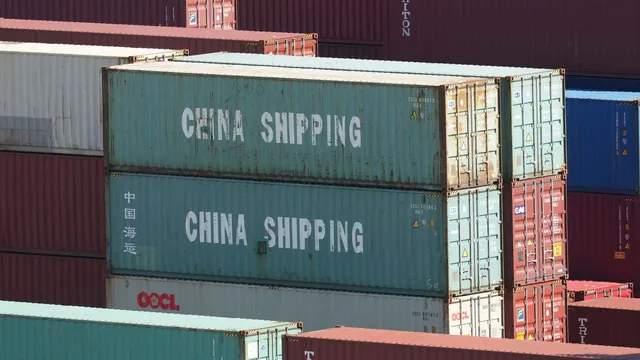
China retaliates with 84% tariffs on U.S. imports amid trade tensions
2025-04-09 16:13- China has responded to the U.S. by imposing an 84% tariff on imports from the United States.
- This tariff increase follows the U.S. administration's larger policy of implementing tariffs, creating significant volatility in stock markets worldwide.
- The ongoing tensions between the U.S. and China underline the complexity of their trade relationship, with both economies interlinked.
Express your sentiment!
Insights
China has taken a significant step in the ongoing trade dispute with the United States by enforcing a staggering 84% retaliatory tariff on U.S. imports. This decision comes in the wake of the Trump administration's implementation of approximately 10% tariffs on numerous imports from other countries, which took effect at midnight around the same time. The Chinese government has asserted that such U.S. tariffs infringe upon China’s legitimate rights, thereby necessitating their response. As the news broke, it led to sharp declines in various stock markets across Asia, with the Nikkei 225 and DAX indices recording notable losses. The trade volume between the U.S. and China has seen considerable growth over the years, escalating from about USD 2.5 billion in 1979 to nearly USD 688.3 billion in 2024, highlighting the deep interdependency between the two nations despite the mounting tensions. The reaction to these tariff announcements was swift; as U.S. companies like Nike and Apple saw their stock prices increase slightly at the opening of the New York Stock Exchange, indicating that investors may be interpreting the news with a sense of cautious optimism. International responses, however, were predominantly negative. Countries across the Asia-Pacific region operated under a significant amount of uncertainty, as markets reacted poorly to the latest tariffs, demonstrating the increasing fears over global economic stability. U.S. Treasury yields also rose in response to the tariff implications, strengthening the dollar against Asian currencies. Overall, the imposed tariffs are set to have wide-ranging consequences, impacting businesses and consumers alike, while contributing to heightened tensions in U.S.-China relations as both countries engage in further negotiations on trade policies and tariffs.
Contexts
The history of US-China trade relations has been shaped by a mix of cooperation and conflict, reflecting broader geopolitical dynamics. In the late 18th century, trade between the United States and China began with American merchants sailing to China to trade goods such as furs and ginseng. The establishment of formal diplomatic relations in 1844 with the Treaty of Wanghia laid the foundation for trade, enabling the US to gain unequal trading advantages in a period dominated by European powers. Throughout the late 19th and early 20th centuries, trade between the two nations expanded, although it was often hindered by political issues, including China's internal strife and the Boxer Rebellion, which led to further foreign intervention in China's affairs. The mid-20th century marked a significant shift in US-China relations due to the Chinese Civil War and the subsequent establishment of the People's Republic of China (PRC) in 1949. The United States, adopting a policy of containment against communism, largely severed diplomatic and trade ties with China. This period of isolation persisted until the 1970s when, under President Richard Nixon, direct diplomatic engagement was initiated. The landmark visit of Nixon to China in 1972 paved the way for a normalization of relations in 1979, which greatly enhanced trade. Following China's economic reforms spearheaded by Deng Xiaoping, the flow of goods between the US and China skyrocketed, positioning China as a central player in the global economy. In the 21st century, US-China trade relations became increasingly complex. China's entry into the World Trade Organization (WTO) in 2001 marked a turning point, facilitating China’s emergence as the world's manufacturing hub. However, this growth raised concerns in the US related to trade imbalances, intellectual property theft, and labor practices. As the economic relationship grew, so did tensions, culminating in escalating trade disputes during the 2010s. The US imposed tariffs on Chinese goods as part of a broader strategy to address trade practices deemed unfair. The escalating tariffs created a significant trade war, affecting global supply chains and disrupting the economic landscape for both nations. The trade relationship continues to evolve, with ongoing dialogues and negotiations attempting to address complex issues ranging from tariffs to technology transfer. The COVID-19 pandemic further complicated these relations, revealing the vulnerabilities of over-reliance on Chinese manufacturing and raising calls for reshoring critical supply chains. As of 2025, the future of US-China trade relations remains uncertain, characterized by a mix of competition and cooperation in a rapidly changing global environment. Both nations must navigate these challenges carefully to foster a stable and mutually beneficial economic partnership.